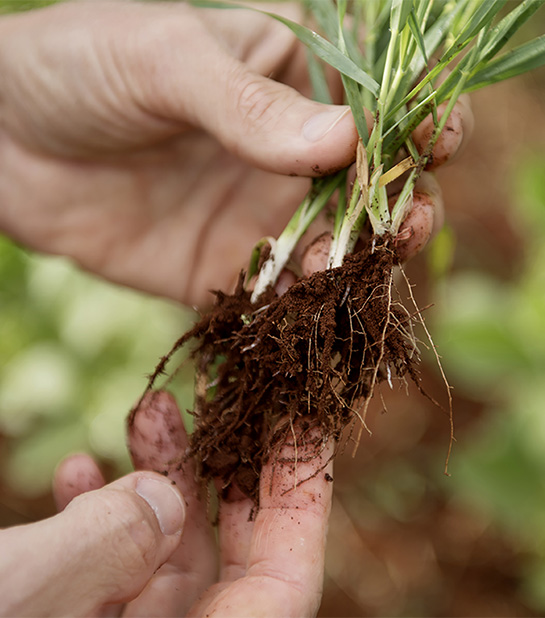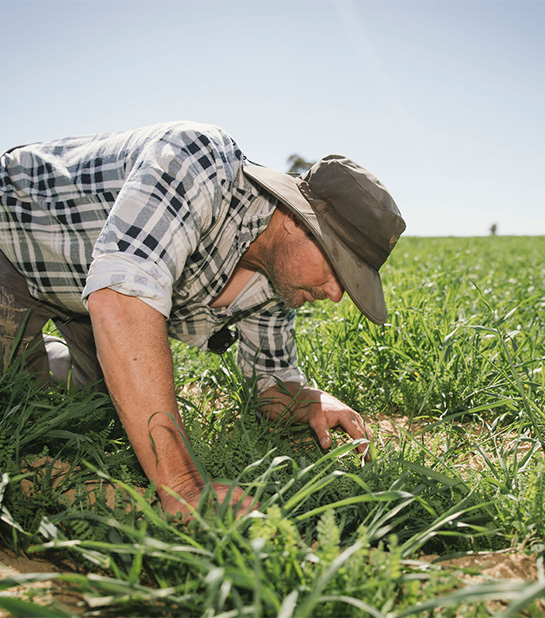Key Points
- Farmers want to know more about their soil to make evidence-based decisions on land management.
- Electronic nose (eNose) technology may be a useful way to monitor changes in the soil and provide this information to farmers.
- Further research is required to precisely understand the changes in soil biological activity that are associated with changes in the eNose signal.
- To produce a robust and user-friendly device, further refinement and development of the eNose, associated analytics, and user-interfaces are needed.
Our Research
In this project we investigated what growers want to know about their soil and how they want to access this information. To achieve this, we developed an eNose, which was trialled in both laboratory (pot) and field settings.
To create the eNose we used Arduino ecosystem components together with several low-cost MOS sensors. The eNose sits within a 3D printed housing. Currently the eNose connects to external power and saves data to an SD card, from which it can be downloaded.
Early in the project we held a series of workshops with collaborating grower groups to understand their requirements for on-farm soil sensing. We asked two very open questions:
1. Imagine that this technology can tell you anything about your soils. What would you like this technology to tell you about your soil?
2. What would you be prepared to do to get this information? What time, effort or other investment would you make to get some value from the technology?
We also provided space for people to list other thoughts about soil sensors and understanding their soil.
Pot trials
We designed our pot trials to investigate two soil activities:
- to detect the volatile compounds associated with plant–bacteria communication and
- to determine whether the eNose could detect and signal the different drying stages of soil.
For Trial 1 we planted seedlings of two different clover species into a growing medium inoculated with the appropriate microorganism. eNoses were placed in the pots and the plants were assessed four weeks later. In the second pot trial, we collected two different soils (a sandy loam and a ferrosol) and placed them into pots which were then submerged into large tubs of water until they became saturated. The pots were left to dry, whereby eNoses recorded data as the soils dried. We collected samples to analyse volatile compounds (using gas chromatography) and microbial activity (via community level physiological profiling and specific enzyme assays).
Field trials
We tested eNose field functionality in a short field trial carried out at the University Farm in Cambridge, Tasmania. Four eNoses were deployed and left to run for approximately six weeks. We used this data to determine longevity of the eNoses, whether they could function in a more complex environment, and whether the data was within the expected range of values and variability.
Research Findings Outcomes
From our workshops we learned that growers are willing to invest time and money into learning more about their soil. Growers are particularly interested in biological diversity, nutrient levels and whether their soil is ‘improving’ over time. Growers also identified a list of features that they would like to see in the eNose including the ability to store and access data from their devices, and data that is both easy to interpret but with the ability to access detailed data.
The pot trials illustrated that the eNose can detect differences in soil Volatile Organic Compounds (VOCs), differentiate between different soil types, and more importantly between the same soil under different conditions. However, the differences observed between different soil types means the eNose should be ‘calibrated’ for this and different systems.
We found that some sensors produced different signals in pots with nodulated legumes compared to non-nodulated legumes. This suggests that the eNose can detect differences in VOCs resulting from biological activity, specifically the difference between plants with symbiotic rhizobia and those without.
After six weeks in the field, two eNoses were still active although only one was collecting data; the other did not have a signal from the sensors despite still being operational. The other two eNoses stopped functioning earlier in their deployment.
The data retrieved from the functioning eNose showed that the signal produced was within the expected range for the entire time. We observed expected diurnal fluctuations in temperature; we also observed other fluctuations that were not related to temperature or time, probably the result of other soil processes.
Next Steps
The research carried out in this project is only the beginning. There are still some engineering and design questions to resolve and improvements to make.
Looking to the future, we hope to
- In collaboration with growers, further develop the user interface in such a way that the output is useful and usable to the grower.
- Learn more about the eNose technology capabilities and what it can detect.
- Conduct more field trials across a range of soil types and farming systems to investigate where the eNose can provide the most useful information.


Project Team and Fact Sheet Authors
Shane Powell (University of Tasmania)
Katherine Evans (University of Tasmania)
Posted Jun 9, 2022

